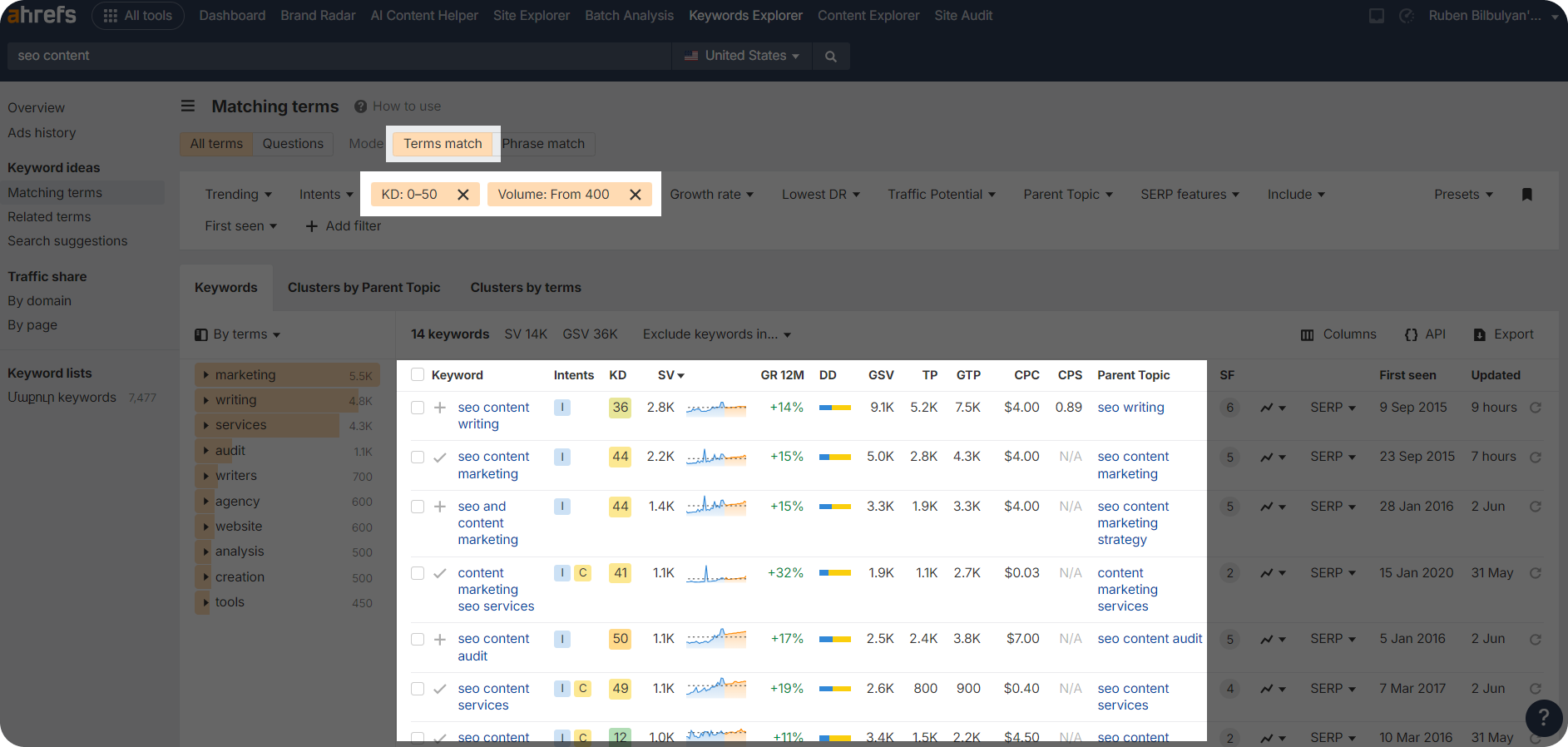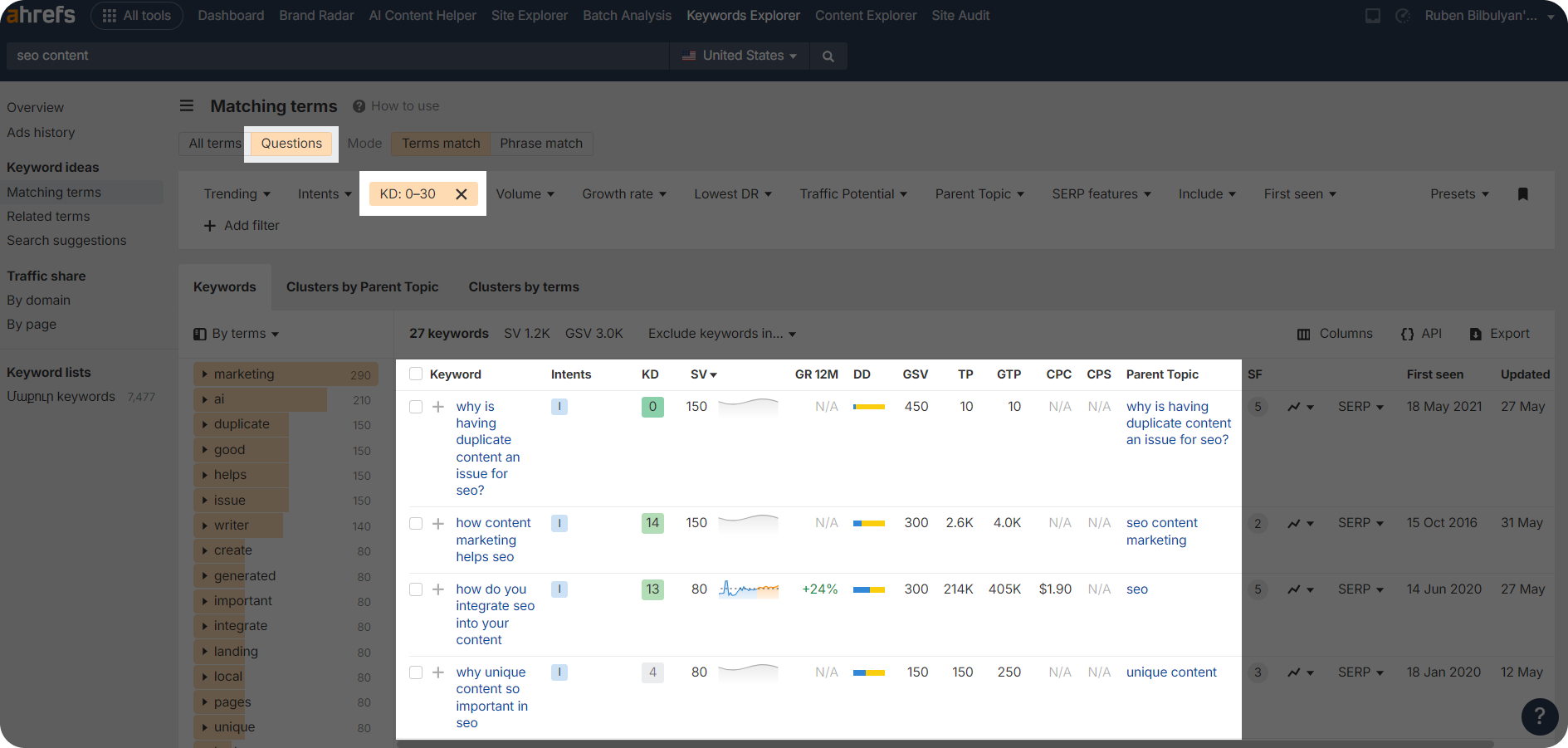You’ve got great content. You’ve spent hours writing it. But it’s not showing up on Google.
Perhaps you’re missing one important thing: primary keywords. These are important search terms that tell search engines, “Hey, this is what my content is about!”
In this guide, we’ll explain what they are, why they matter, how to find those keywords, and where to include them.
What are Primary Keywords?
A primary keyword, also known as a focus keyword, is a search term for which you want your content to be optimized and ranked for.
For example, in our blog about link velocity, we targeted the keyword “link velocity” as a primary keyword. As you can see, it shows up in meta tags, H1, throughout content, and other key SEO spots to help Google understand what the page is about. (More on that later.)
Now, let’s find out why they are important for SEO.
Why Are Primary Keywords Important?
Here’s why primary keywords are important for SEO:
- They help Google understand what your content is about: Primary keywords help search engines understand the main topic of your page. Without them, Google may not know how to categorize your content or show it to the right audience.
- They make indexing easier: Google uses content tags and attributes, like meta tags and alt attributes, to understand your page content. Thus, including your main keyword in these places helps the page get properly indexed.
- They help you rank on search results and bring traffic: When someone searches for a keyword you’ve optimized for, your page is more likely to appear in the results, bringing in readers who are actually looking for what you offer.
- They help you define the focus of your content: Think of your primary keyword as the core of your topic. If your keyword is “types of keywords,” your content should revolve around explaining the different categories.
Now that you know why primary keywords are important, let’s break down how they’re different from secondary keywords.
Primary Keywords vs Secondary Keywords
For effective content optimization, it’s important to know how primary and secondary keywords work and how they’re different:
Primary keywords:
- The main keyword your page is built around (e.g., “link building”)
- Each page should focus on only one primary keyword to avoid keyword cannibalization
- It defines the core topic of your content
- More competitive
Secondary keywords:
- Related terms that add context to your main topic. Some examples for “link building” might include “link building strategy” and “white hat link building.”
- You can use multiple secondary keywords on a single page
- They’re usually more specific and less competitive
Using both types together ensures your content is focused, relevant, and more likely to rank for a range of related search terms.
How to Find Primary Keywords With Ahrefs
Follow these steps to find a primary keyword for your next article.
Step 1: Sign in to Ahrefs and go to “Keyword Explorer.”
Step 2: If you have a topic in mind, just type it in and see what suggestions pop up (e.g., “seo content”). This is your starting point for keyword research.
Step 3: Check out the parent topic for that specific keyword. It determines whether you can rank for your focus keyword while targeting a more general topic instead. As you can see, here, the parent topic is “SEO content marketing.”

Step 4: Check out the “Keyword ideas.” It includes the following main sections:
- Terms match: A list of keywords that include all of the terms of a target keyword in them (in any order).
- Questions: A list of keywords that show you search queries in the form of questions.
- Also rank for: A list of keywords that the top 10 ranking pages for your target keyword also rank for.
- Also talk about: A list of other keywords and phrases that the top-ranking pages for your target keyword often mention.

Step 5: Go through each section and review keywords. Filter by
- Keyword difficulty: The lower it is, the better. It means that competition is not super high and quite manageable to rank high with that keyword.
- Global search volume: The higher it is, the better. It means that many people search for your primary keyword on a monthly basis.
- Intent: This shows the reason behind each search query. If you want to target a primary keyword with informational search intent, make sure to set it from filters.
Here’s what keyword results I got when clicking on Terms match for “SEO content” search term.

And, here are some queries in the form of questions for the same keyword.

Once you find a keyword that meets your target audience’s needs and has good metrics, go ahead and use it in your content.
How to Find Primary Keywords With SEMrush
While we don’t use SEMrush for our keyword research, it’s another good SEO tool that can help you find primary keywords. Here’s how.
Step 1: Sign in to your SEMrush account and head to “Keyword Overview.”
Step 2: Type your seed keyword (e.g., link building) that’s related to your future blog post to start the research. As you can see, the keyword is super competitive, meaning that it will be hard to outrank competitors.
But don’t panic. Just look for related keywords that are easier to rank for.

Step 3: Check out the “Keyword Ideas,” where you can find the “Keyword Variations” and “Questions” sections.

Step 4: Review the keywords in each section. Filter by difficulty, global search volume, and search intent to find the best options.
Note: Ahrefs and SEMrush use different methods to calculate these metrics. So, don’t be surprised if you see huge differences in numbers.
Step 5: Export the results to a CSV file, where you can easily organize the findings and use them in the future for upcoming articles.
Where to Include Your Primary Keyword?
If you want your content to rank, it’s not just what you say. It’s also where you add it.
Adding your focus keyword in the right places helps search engines understand your topic and improves your chances of showing up in search results. Here’s where to focus:
- Meta title and description: These appear in search results, so including your keyword here tells Google (and readers) what your page is about.
- H1 (page title): This is the headline people see first. Adding your keyword here helps set the context right away.
- URL (or slug): A short, clean URL that includes your keyword makes it clear what the page is about, both for users and search engines.
- Image alt text: Write a brief image alt text (under 100 characters) that includes your keyword. It helps with SEO and accessibility.
- Body of content: Use your keyword naturally throughout your article, especially in the main sections where the key ideas are covered.
- Subheadings (if it fits): It’s optional, but including your keyword in subheadings can help. Just make sure it feels natural and not awkward.
The key is balance: while keyword density is important, we recommend using your focus keyword where it fits best, so your content stays easy to read and still gets noticed by search engines.
Final Thoughts
Getting your content to rank isn’t about keyword stuffing. It’s about finding the right primary keyword.
Once you find your focus keyword, everything else falls into place. It guides your content, helps search engines understand what your page is about, and brings targeted traffic to your site.
And if you’re not sure where to start, no worries. Our team at SayNine is always here to help. Check out our full SEO services, where keyword research is also covered.
FAQ about primary keywords
How do I choose primary keywords?
We recommend choosing primary keywords with low keyword difficulty and high global search volume.
What is a secondary keyword?
Secondary keyword is a search term related to your primary keyword, which adds more depth to the context.
Which keywords are most popular?
Some of the most popular keyword types are primary, secondary, short-tail, and long-tail keywords.






